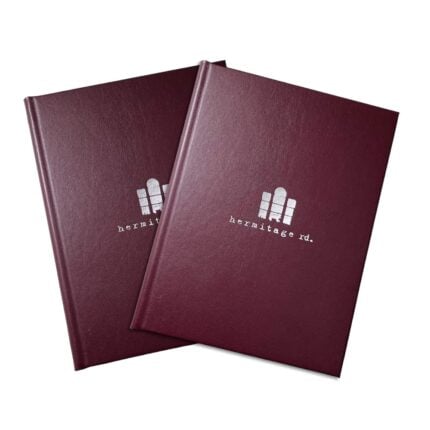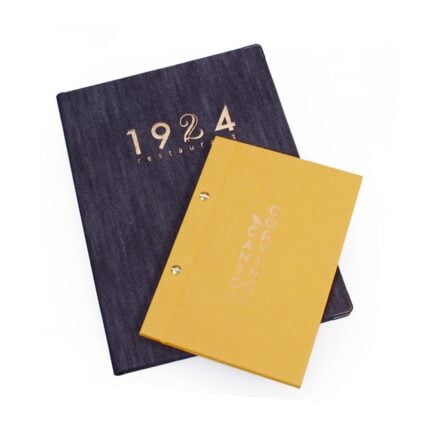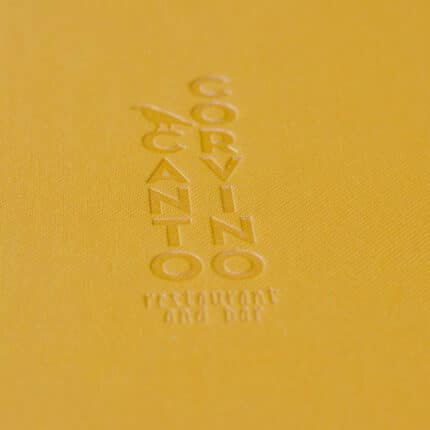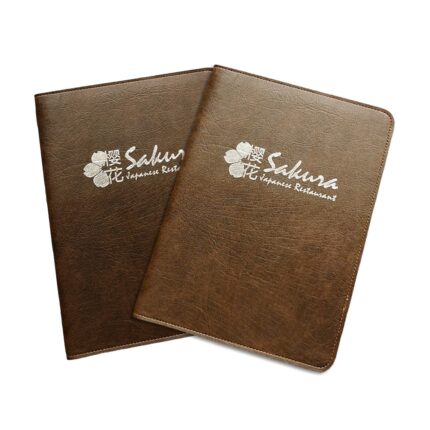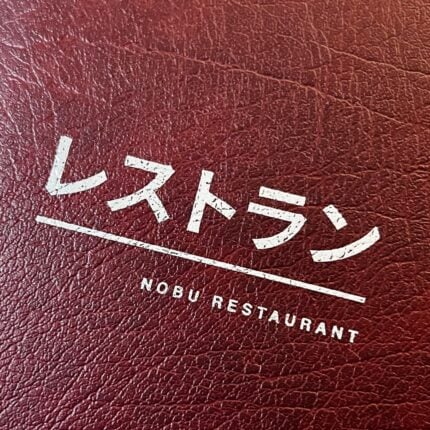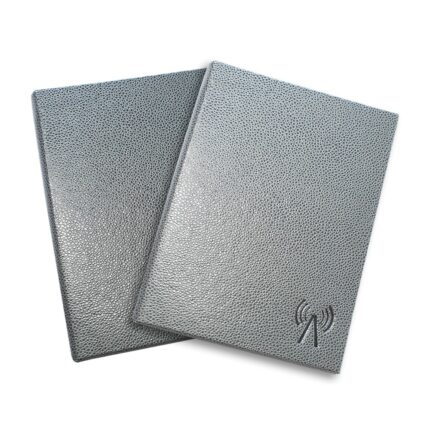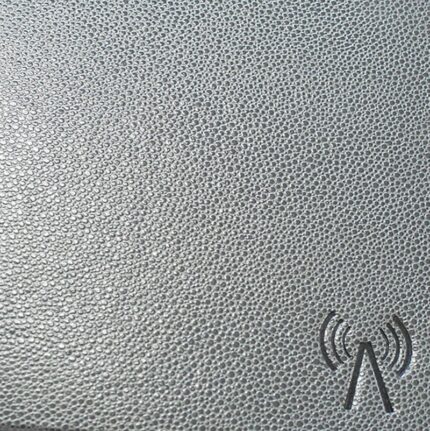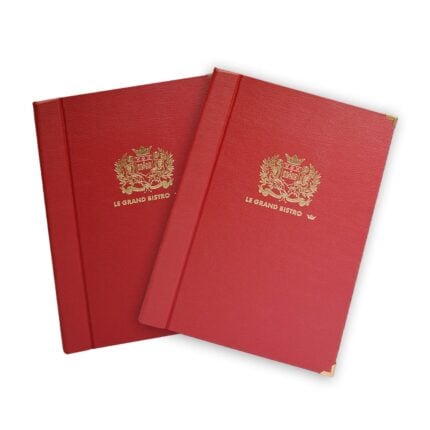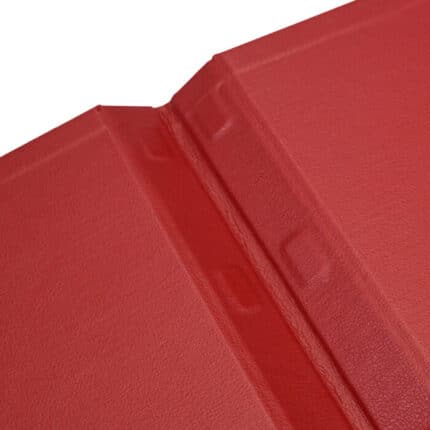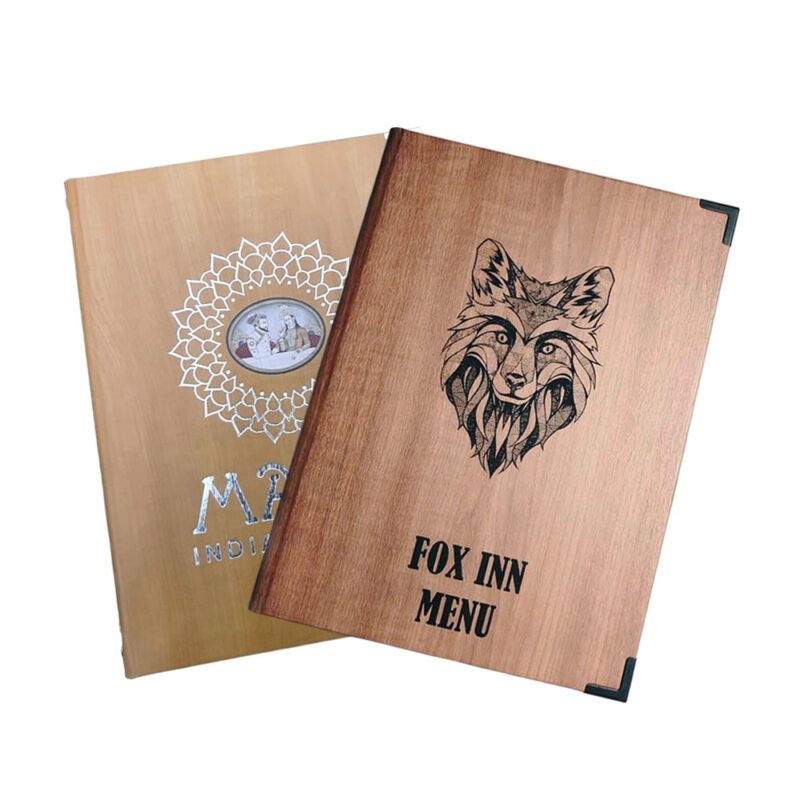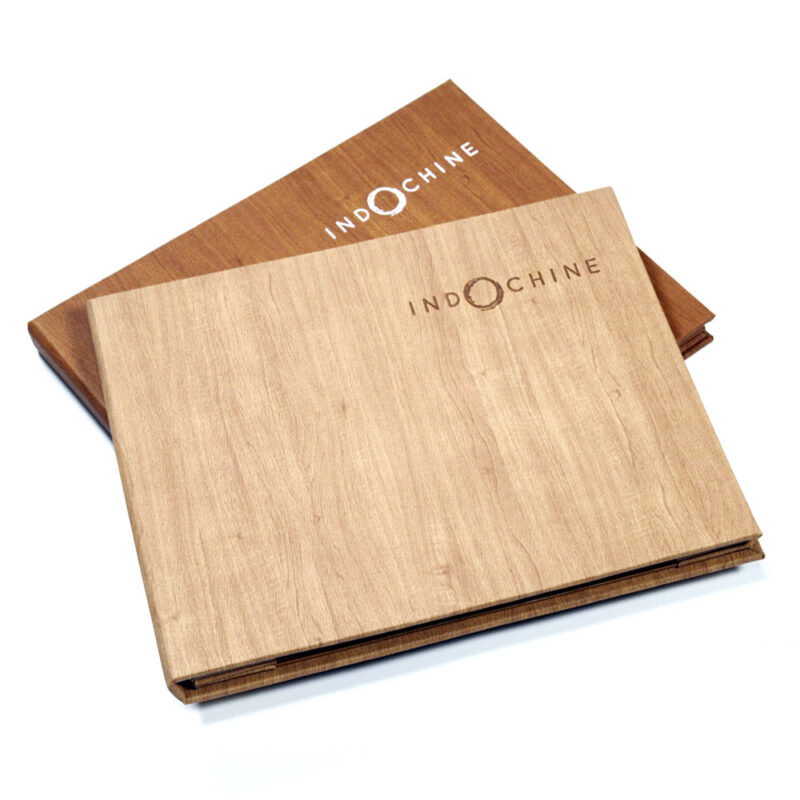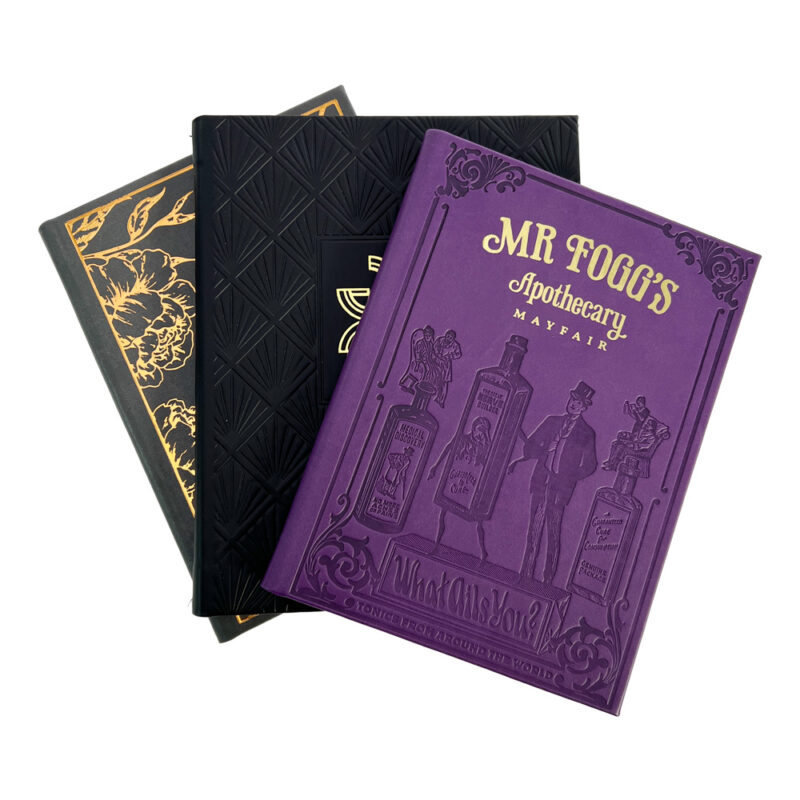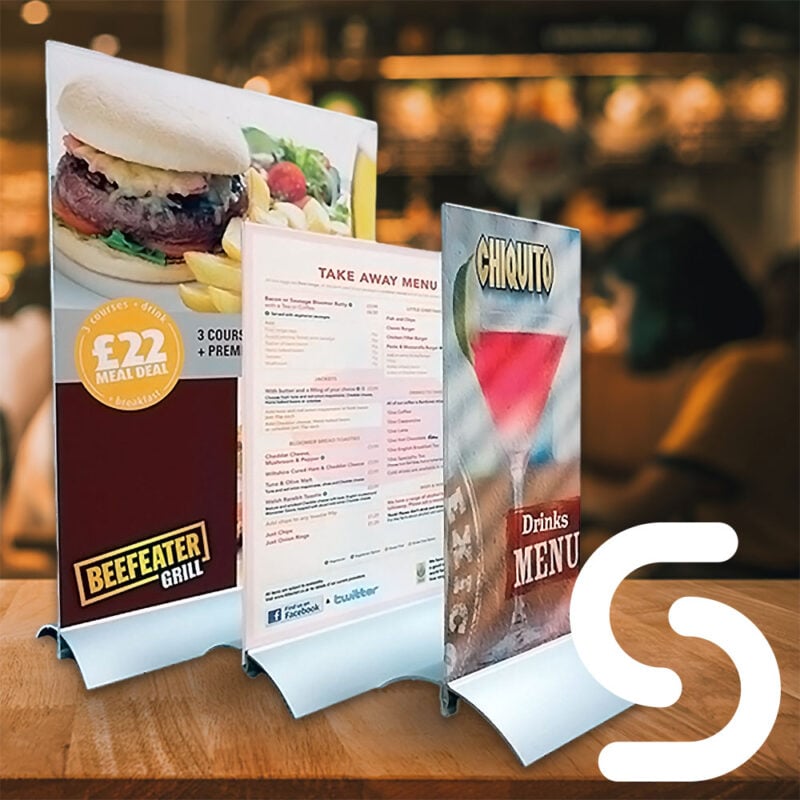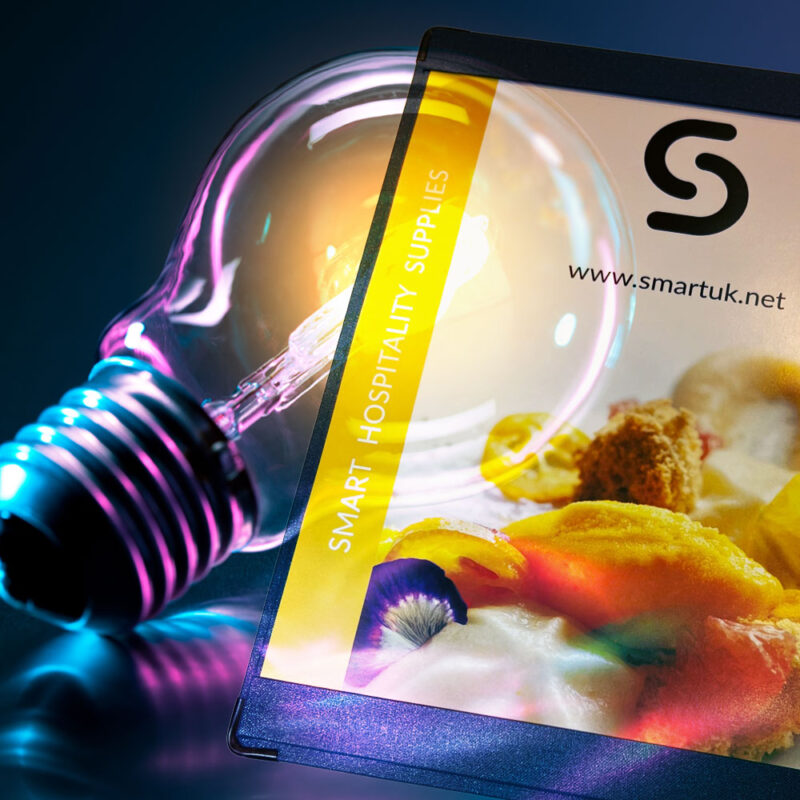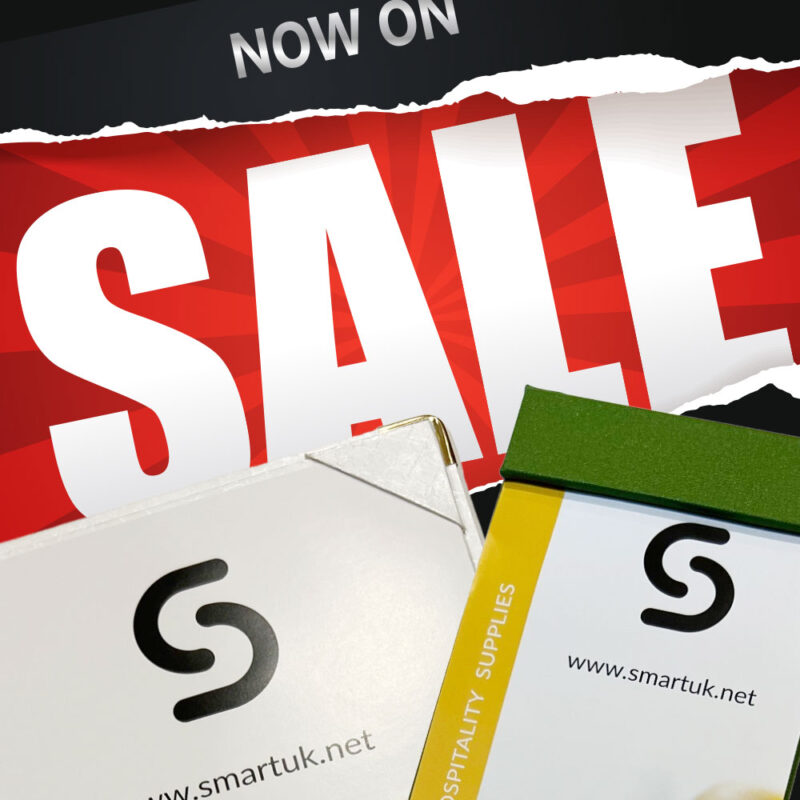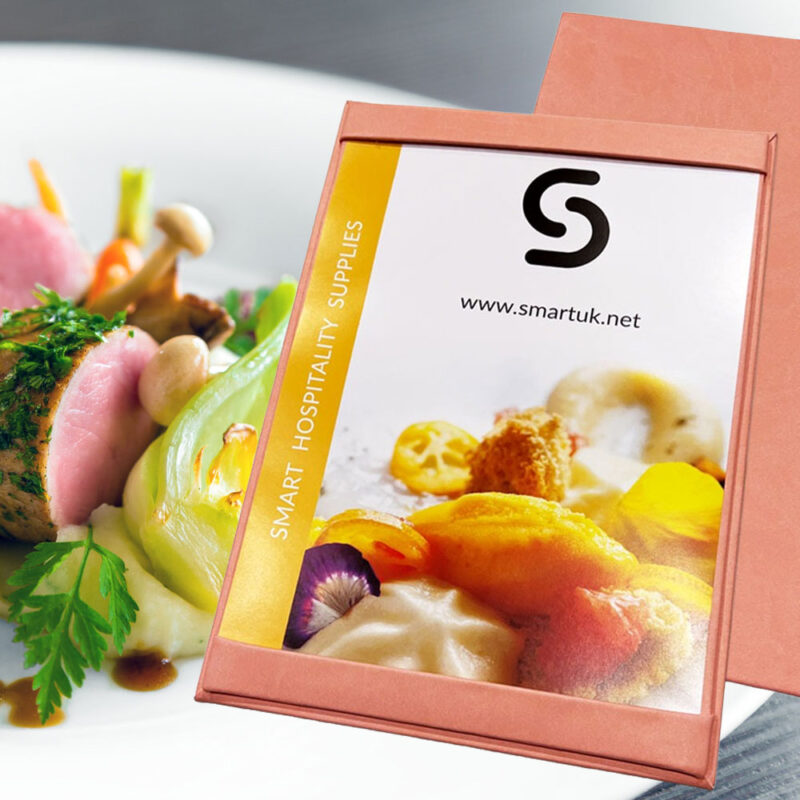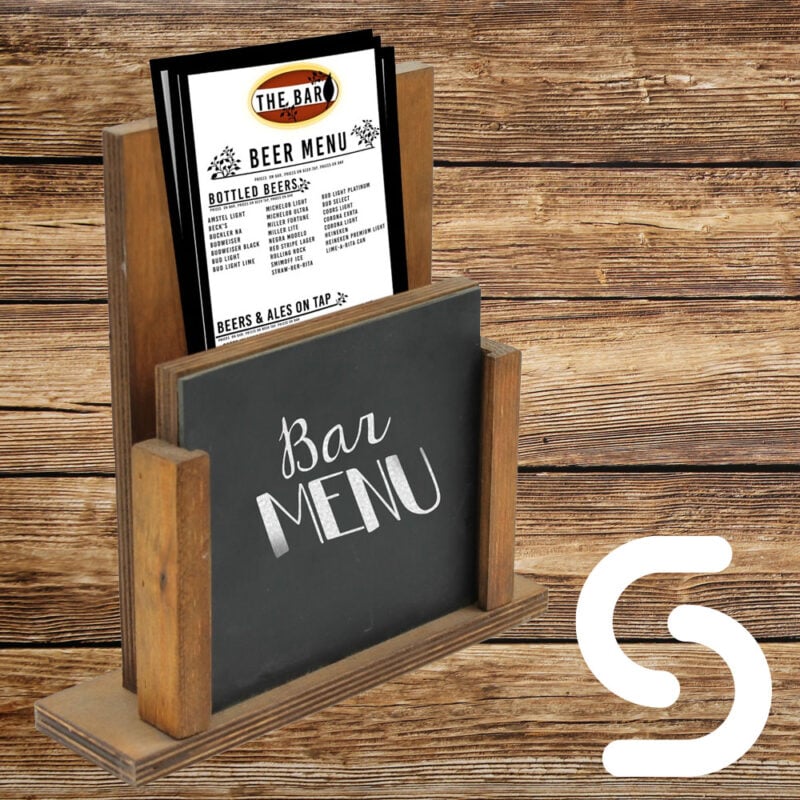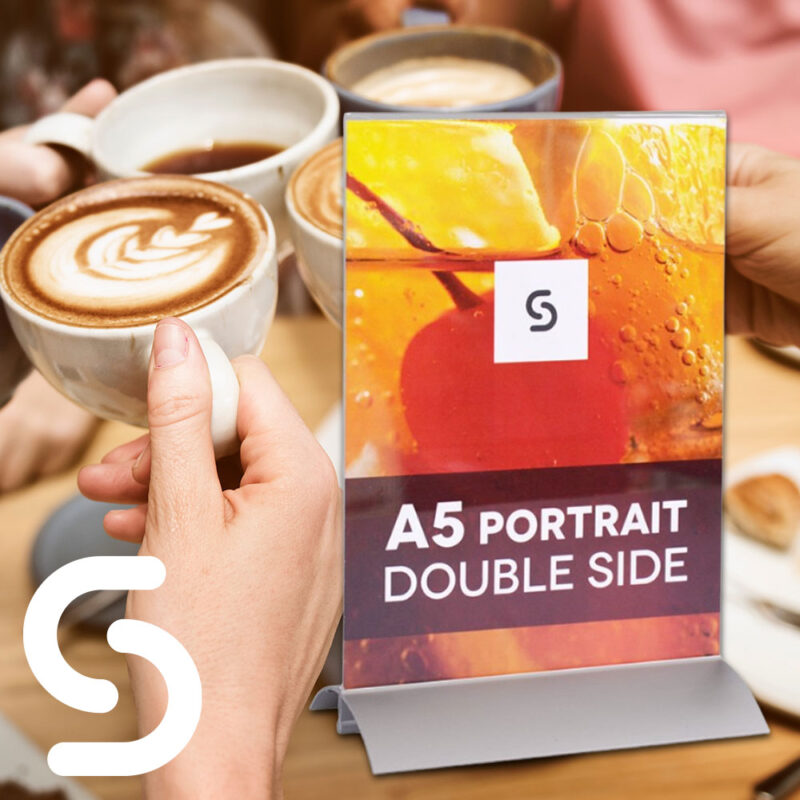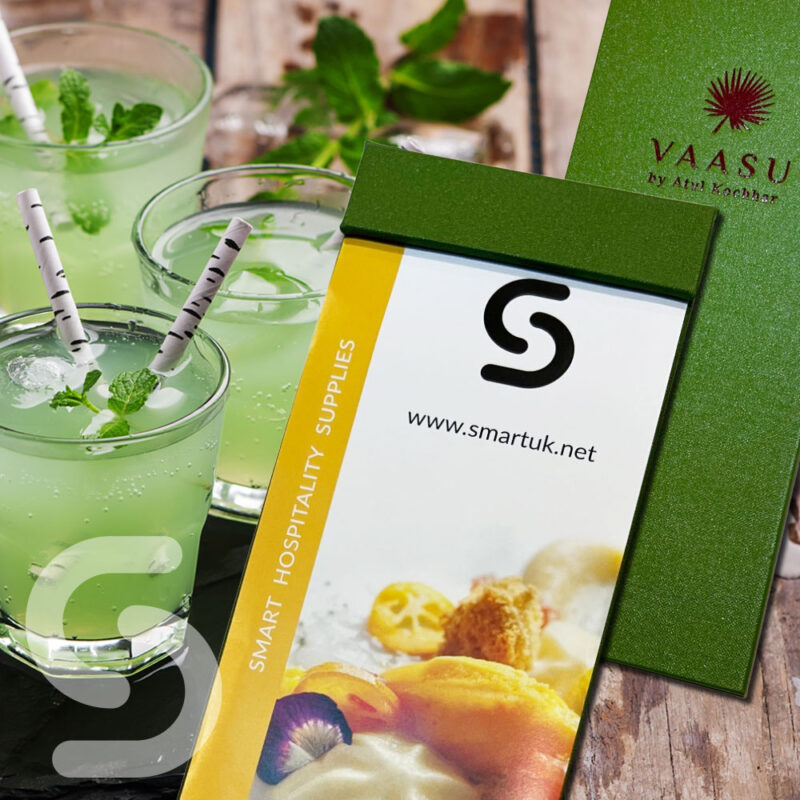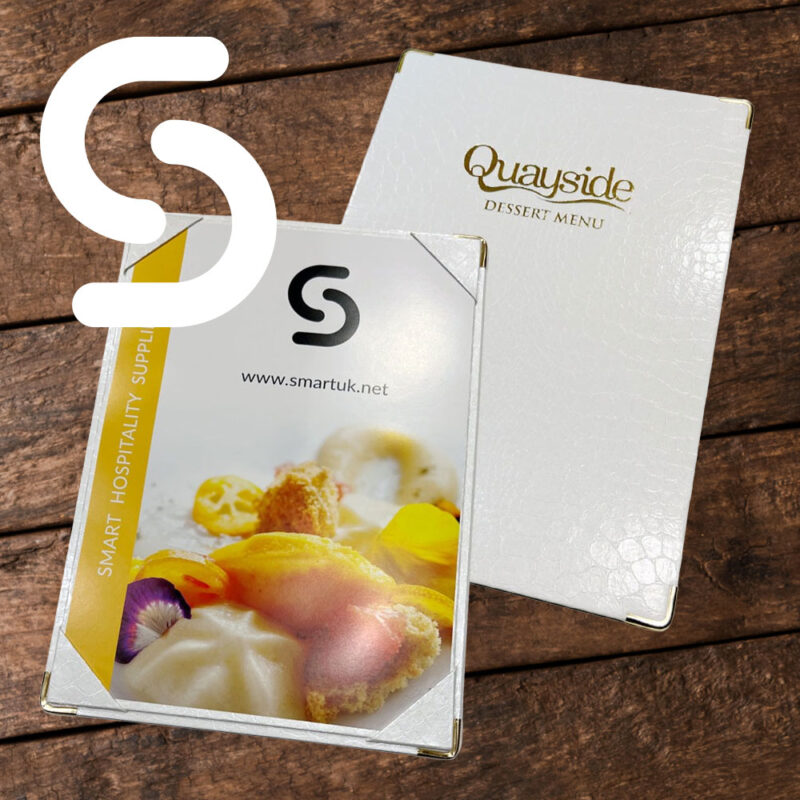Check out this comprehensive guide if you need help selecting the perfect menu covers for your venue.
Choosing the right menu covers can set the tone for your establishment, be it a restaurant, pub, or cafe. The menu isn’t just a list of food and drinks; it’s an extension of your brand. In this blog, we’ll guide you through what you must consider, from wood effect strip designs to full–colour printed details, to ensure you make an impression.
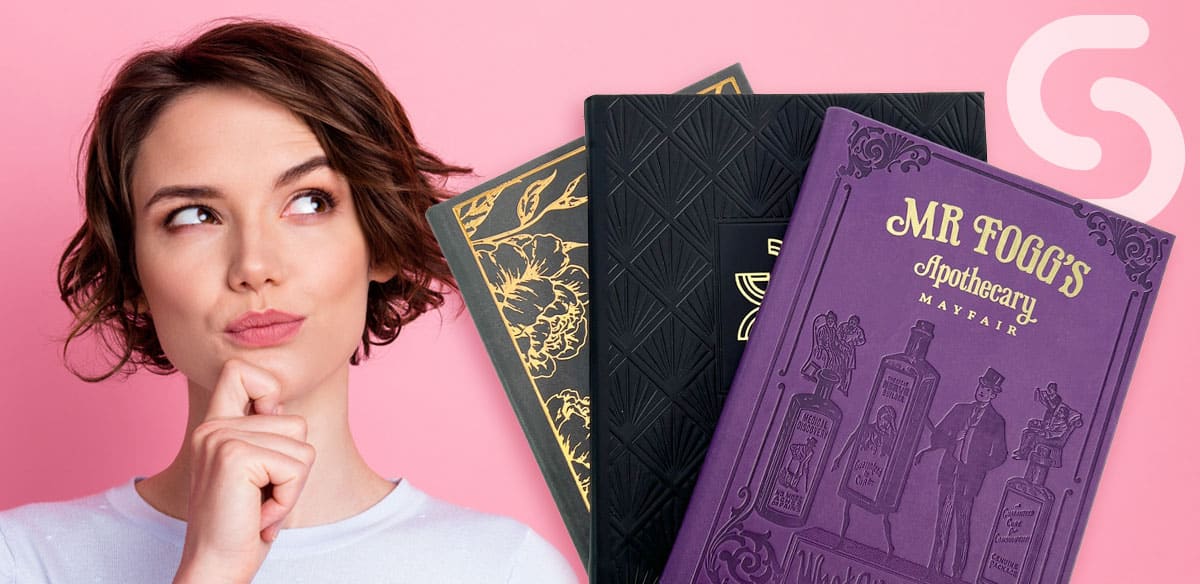
What are Menu Covers, and why are they important?
Menu covers are specialised protective casings designed to house menus in various food and beverage establishments. They are often made from materials like leather, plastic, metal, or fabric and can be custom-designed to fit the ambience and style of the restaurant or cafe.
One primary function of menu covers is to protect the sheets from spills, stains, and general wear and tear. Menus frequently change hands between customers and staff; they can quickly become damaged or dirty without adequate protection. A menu cover allows for easier maintenance and cleaning, which saves on costs related to printing new menus in the long run.
Menu covers also serve an essential role in establishing the restaurant’s brand identity. From the choice of material to the colour scheme and logo, a menu cover can be designed to be in sync with the overall theme and atmosphere of the venue. For instance, a high-end dining place might use elegant leather covers, while a casual beach cafe could go for something lighter and more colourful.
The structure provided by menu covers can make it easier for customers to read the menu. Often, menus are multi-page documents with different sections for appetisers, main courses, desserts, and beverages. A good menu cover helps organise these different sections clearly, aiding customers in making their choices and thus speeding up the ordering process.
How do menus attract customers?
The menu’s cover, design, and layout are pivotal in capturing initial attention, while descriptive dish names, pricing strategies, and imaginative descriptions engage customers’ senses and curiosity. By highlighting signature dishes, offering seasonal specials, and maintaining consistency with the restaurant’s branding, menus can create a lasting impression and draw customers in.
What colour should my menu be?
The colour should align with your branding and the mood you aim to set. Dark colours like black or brown often suit upscale establishments, while brighter colours may be better for casual eateries. Our website offers a wide range of colours to suit your preferences, whether you’re looking for something vibrant or more subdued.
How do I make my menu stand out?
Custom cutout and company logo
Your logo or a custom cutout pattern on the cover can catch the eye and make the menu stand out.
Printed artwork and images
Consider incorporating artwork or illustrations that match the style and atmosphere of your business. High-quality printed details can add a touch of elegance.
At Smart, We offer a variety of personalisation methods that can be applied to all our products, depending on the chosen material. Our personalisation options encompass a range of techniques, such as Hot Foil, Debossing, Printing, Engraving, and the use of Metal or Wooden Plates.
What are the different types of menu covers?
Leather Menu Covers
Advantages of Leather Menu Covers
Leather Menus are a top choice for hospitality establishments for several reasons. Firstly, their durability is unparalleled, ensuring that these covers can withstand wear and tear over extended periods of use. This longevity translates to cost-effectiveness for businesses in the long run.
Also, the luxurious look of leather adds a touch of sophistication to any business, leaving a lasting impression on guests. Practicality also comes into play, as leather is easy to clean wine/ soft drink spills with a simple wipe-down, making maintenance hassle-free compared to materials like paper or fabric.
Beyond aesthetics, the tactile experience provided by leather enhances customer dining experiences, and its customisability allows businesses to incorporate their branding through embossing or engraving. Furthermore, these offer excellent protection for menu cards, safeguarding them from spills, creases, and other forms of damage.
Lastly, leather’s timeless appeal ensures that these won’t look outdated quickly, making them a wise investment for any hospitality venue seeking style and substance in their menu presentation.
Establishments that commonly use Leather Menu Covers:
- Fine Dining Restaurants: Matches high-end ambience.
- Upscale Bars and Lounges: Exudes sophistication.
- Country Clubs: Fits the upscale atmosphere.
- High-end Hotels: Complements luxury settings.
- Steakhouses: Align with a rustic, upscale vibe.
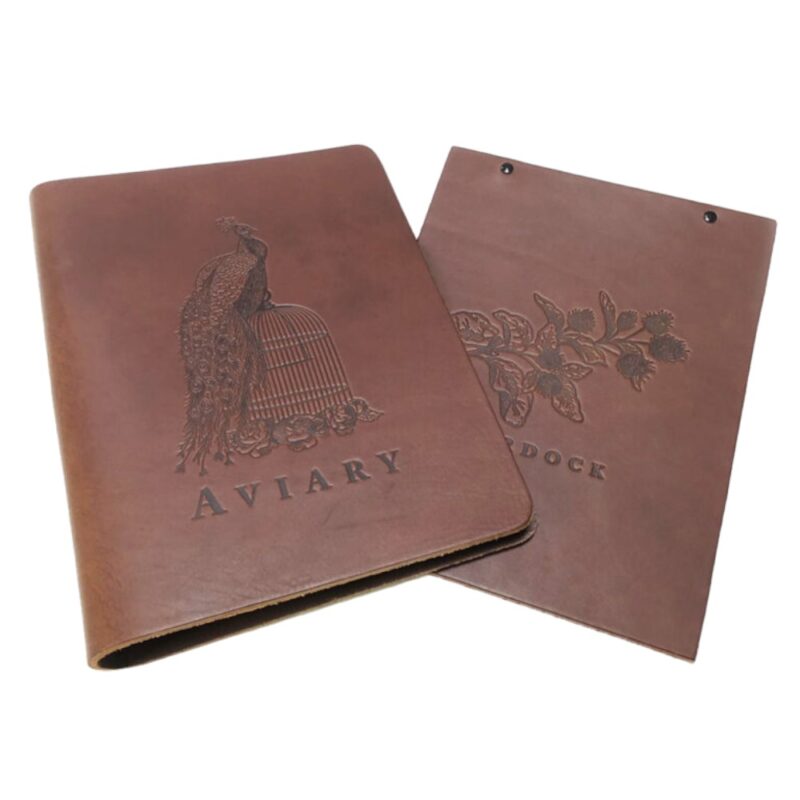
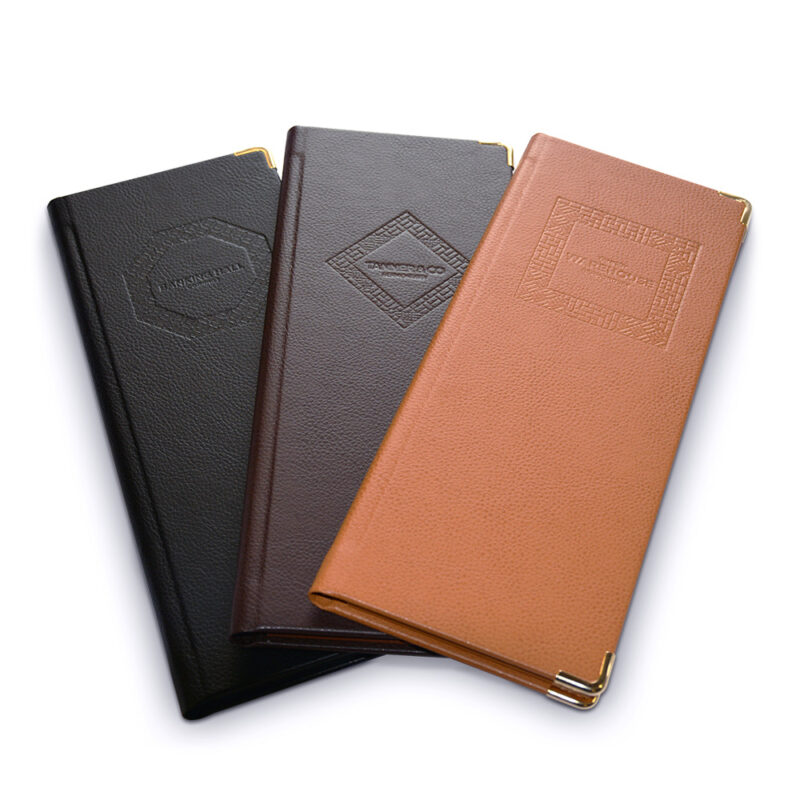
Faux and Recycled leather
Faux and recycled leather menus present a sustainable and eco-friendly alternative to traditional leather menus in the industry. Often crafted from synthetic materials, Faux leather mimics genuine leather’s luxurious look and feel while reducing the environmental impact of animal leather production. Recycled leather repurposes discarded leather scraps and transforms them into stylish, durable covers. These options reduce waste and align with the growing trend of conscious consumerism, appealing to environmentally-aware patrons. While genuine leather menus may exude a classic charm, the choice between faux or recycled leather menus demonstrates a commitment to style and sustainability, reflecting positively on an establishment’s ethos.
Wooden and Wood Effect Menus
Advantages of Wooden and Wood-Effect Menu Covers
The wooden menu covers offer a distinct charm to the hospitality industry. Their rustic appeal adds a warm and natural aesthetic to the dining experience, seamlessly complementing various interior designs and creating a cohesive theme. Choose from light and dark wood effects.
Beyond their looks, wood menu covers boast exceptional sturdiness, capable of withstanding daily handling, drops, and the occasional spill, ultimately resulting in long-term cost savings. The unique wood grain texture gives guests a tactile experience that enhances menu browsing, making it more engaging and memorable.
Wooden menu covers can align with eco-conscious values, as they can be crafted from sustainable or recycled wood sources, offering an environmentally friendly option that resonates with eco-conscious patrons.
Their surfaces are easily customisable through engraving, branding, or printing with logos and design elements. This allows establishments to subtly integrate their branding into the dining experience, creating a unique and branded touch for their guests.
Leading establishments using Wooden and Wood-Effect Menu Covers
- Farm-to-Table Restaurants: Complements organic, local sourcing ethos.
- Casual Dining Spots: Enhances relaxed atmosphere.
- Beachfront Bars and Restaurants: Fits the natural, outdoor setting.
- Cabin Resorts: Aligns with the rustic, cosy environment.
- Breweries and Wineries: Adds to the artisanal, crafted experience perfect for wine list covers.
American Style Menu Folders
Advantages of American-Style Menu Folders
For several reasons, American menu folders are a practical choice for many establishments.
Firstly, they are cost-effective due to their production materials, often made from plastic or laminated paper. This affordability makes them attractive for businesses looking to keep expenses in check.
Also, these folders are designed for quick updates, featuring clear sleeves or pockets that facilitate easy swapping of individual pages. This is particularly advantageous for restaurants that frequently change their menus or offer seasonal specials, allowing seamless menu adjustments. Their lightweight nature is another advantage, as they are easier to handle for both staff and consumers, making them well-suited for busy establishments.
These menu folders also offer versatility in design, with various colours and sizes available to correspond to the branding or decor of a venue. Custom printing is also more accessible and cost-effective on these materials, allowing businesses to personalise their menus effectively.
They are also low-maintenance and typically easy to clean and replace. They make them practical for high-turnover settings where menus are handled frequently, ensuring guests a smooth and efficient dining experience.
Leading establishments using American-style menu Folders
- Fast-Casual Restaurants: Ideal for places with frequently changing specials and a high customer turnover rate.
- Diners and Cafes: Their informal ambience aligns well with most cafes as these folders have straightforward, functional designs.
- Food Vans: These folders’ lightweight and easy-to-update nature suits a food van’s dynamic, fast-paced environment.
- Chain Restaurants: Cost-effectiveness and ease of updating are essential for large chains with standardised menus across multiple locations.
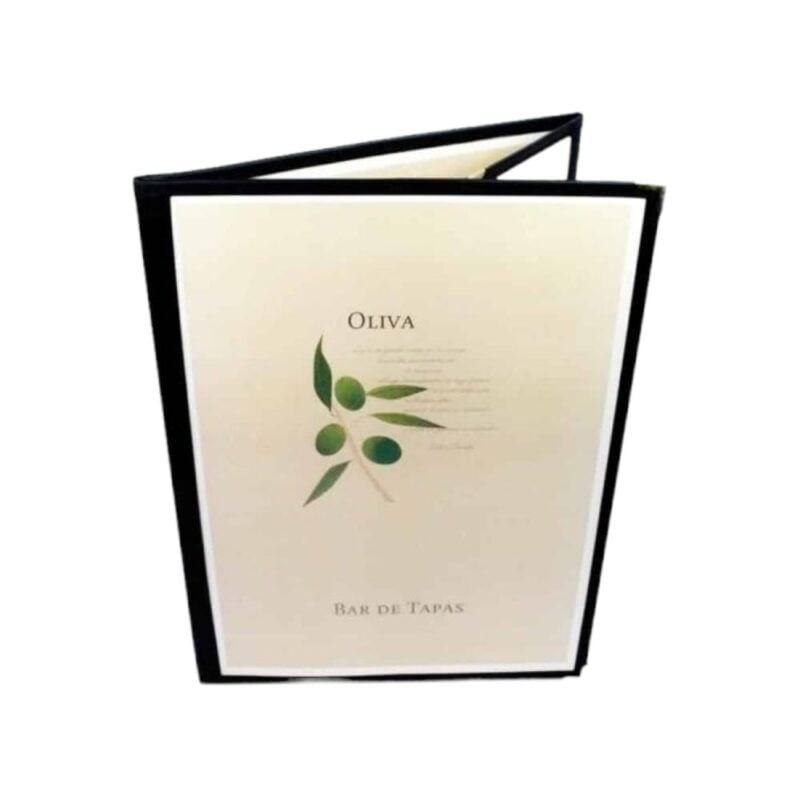
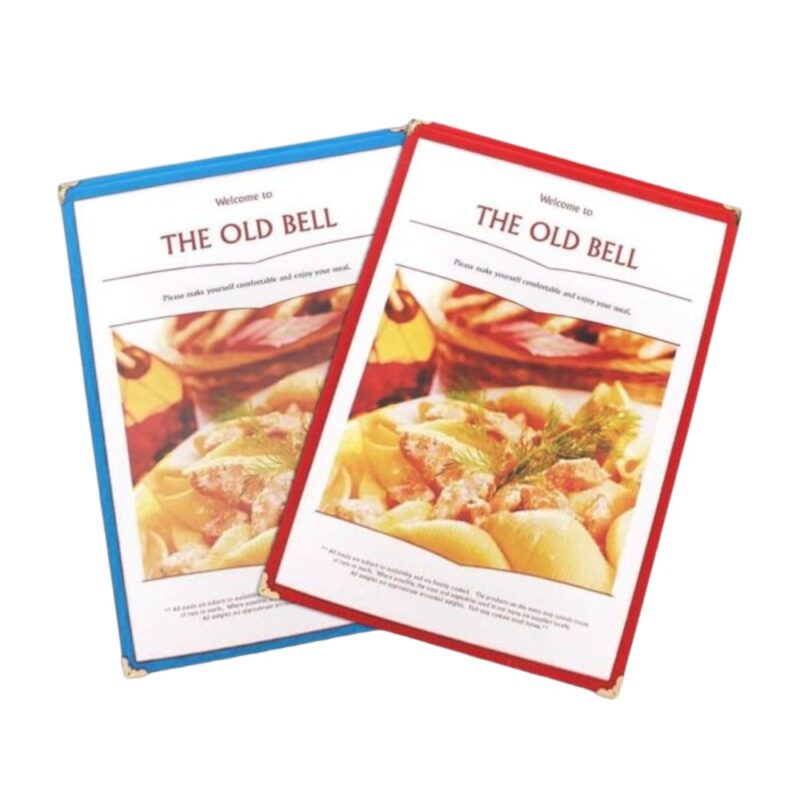
Fabric Menu Covers
Advantages of Fabric Menu Covers
Fabric Menus are a versatile choice for hospitality establishments, offering many advantages.
Firstly, their aesthetic adaptability shines through in the array of textures, colours, and patterns available, providing a wide range of options to fit the desired atmosphere or theme. Beyond appearances, the tactile experience of fabric is unique and adds another layer to the customer’s sensory experience during menu browsing, making it more engaging.
Customisation is also a strong suit, as fabrics can be embroidered or printed with logos and designs, allowing establishments to integrate their branding into the dining experience effectively. In terms of durability, high-quality fabric materials like Buckram and Pellaq are renowned for their robustness and resistance to wear and tear, ensuring long-lasting covers that stand up to daily use.
Speciality fabrics
- Vivella: Known for its leather-like feel and appearance, Vivella is durable, has a soft, smooth texture, and is easy to wipe clean.
- Labyrinth: Offers a complex, visually appealing pattern, often giving a sense of sophistication and uniqueness.
- Pellaq: An imitation leather with a high-gloss finish, Pellaq is durable and scratch-resistant and provides a luxurious appearance.
- Buckram: A cloth often coated for added durability, Buckram is resistant to moisture and wear, making it long-lasting.
Leading establishments using Fabric Menu Covers
- Themed Restaurants: The wide range of fabrics and designs make these covers ideal for establishments with a specific theme or atmosphere.
- Upscale Cafes: The luxurious options like Vivella or Pellaq can complement a high-end coffee or tea experience.
- Banquet Halls: Customisation options make fabric menu covers ideal for special events that require a particular aesthetic.
- Boutique Hotels: The uniqueness and tactile quality of fabric menu covers can add to the guest experience in boutique settings.
- Artisanal Eateries: The customisable and unique nature of fabric menu covers can align with the crafted, specialised focus of artisanal eateries.
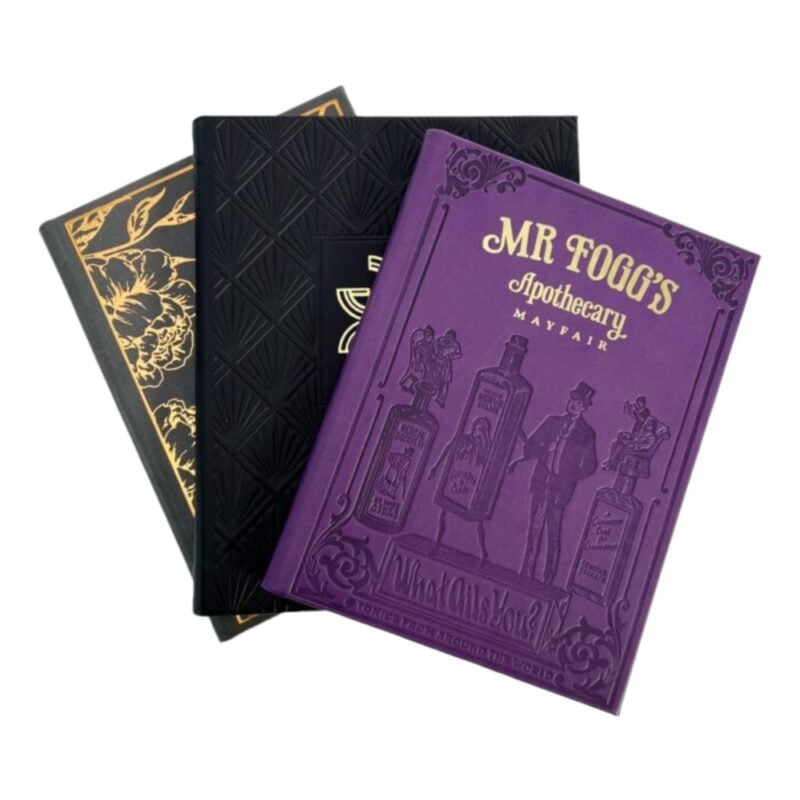
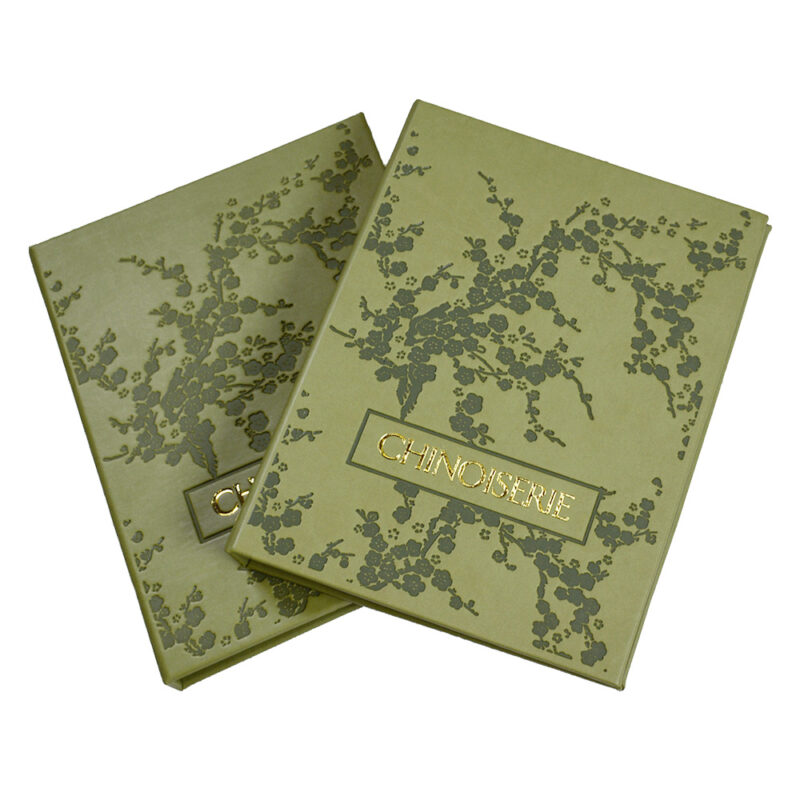
Printed Menu Covers
Advantages of Printed Menu Covers
Printed menu covers offer several advantages that can enhance the dining experience for patrons and benefit establishments. Firstly, they make a powerful visual impact by allowing high-quality graphics, patterns, or illustrations to be printed directly onto the cover. This striking presentation can catch the eye of patrons, piquing their interest in the menu offerings. They are also a super versatile tool for branding, as logos, colour schemes, and mission statements can be seamlessly incorporated into the design. This branding can help establish a consistent and memorable image for the business.
Cost-effectiveness is another advantage of these covers, particularly for businesses that need to update or replace menus frequently. Depending on the chosen material and print type, printed menus can be cost-effective, helping establishments manage their expenses effectively while maintaining a polished and professional appearance.
Leading establishments using Printed Menu Covers:
- Casual Dining Eateries: With frequent menu changes and a need for visual appeal, these covers are practical here.
- Fast Food Chains: Uniform branding is crucial, and these menus can be mass-produced to ensure consistency across multiple locations.
- Coffee Shops and Cafes: These venues’ casual and often artistic atmosphere pairs well with the customisation options available with these covers.
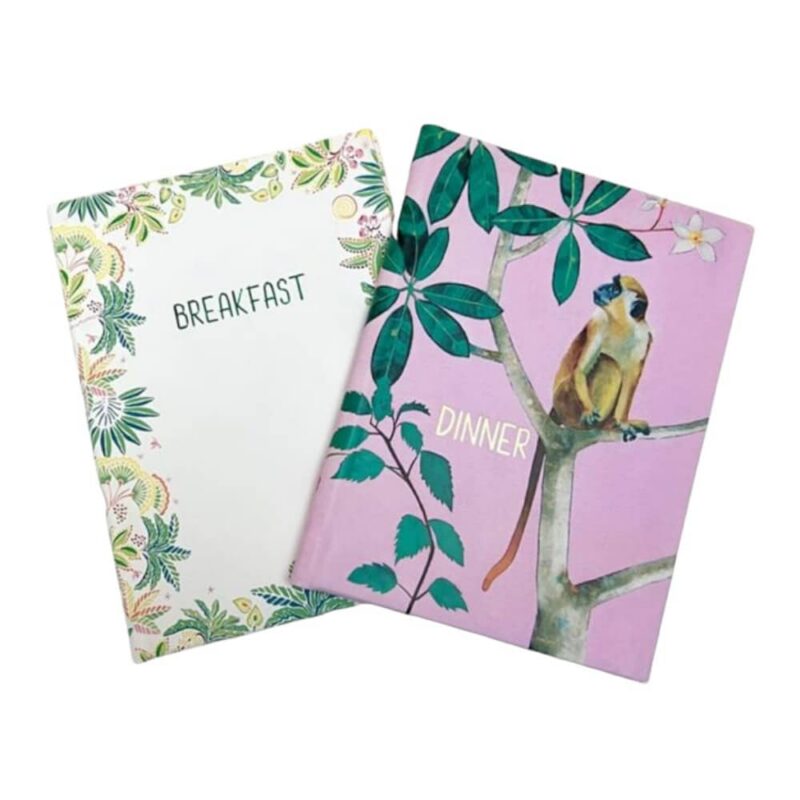
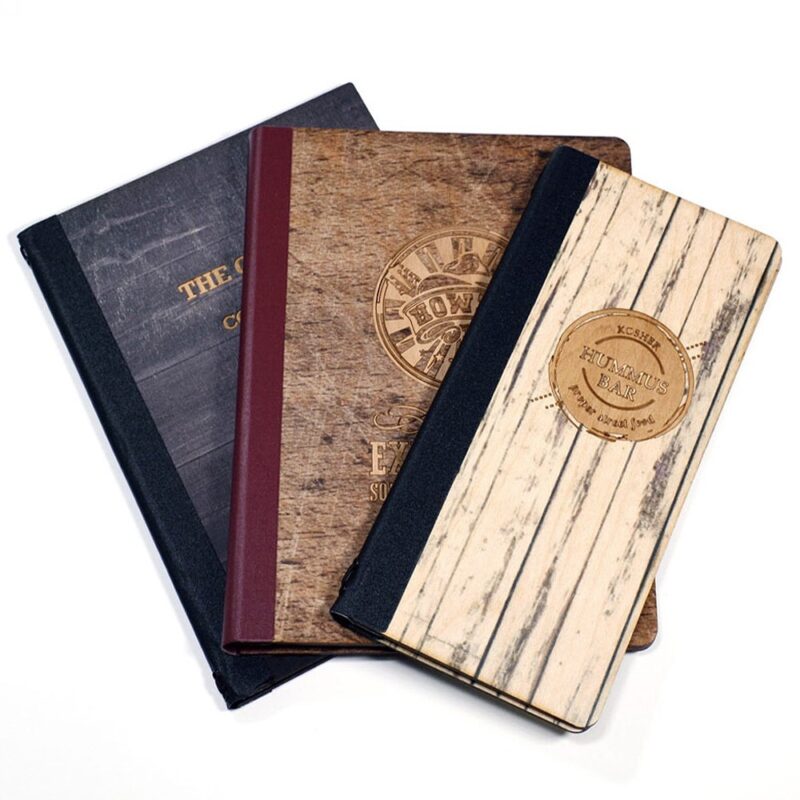
Metal Menu covers
Advantages of Metal Menu Covers
A metal menu cover offers various benefits, making it a compelling choice for hospitality establishments. First, their durability is a standout feature, as metal covers can withstand significant wear and tear, ensuring long-term usage without frequent replacements. This durability translates to cost-effectiveness for businesses in the long run.
In terms of aesthetics, they contribute to a modern and sleek appearance, adding a contemporary or industrial touch to a business. This visual appeal can complement modern interior design themes and create a cohesive and stylish atmosphere.
Hygiene is another critical factor; metal surfaces are highly hygienic and easy to clean and disinfect. This attribute is crucial in maintaining cleanliness standards, which are paramount in the hospitality industry.
Metal offers weather resistance, making it suitable for outdoor dining. Unlike other materials that may deteriorate when exposed to the elements, metal remains sturdy and reliable, ensuring that menus stay in excellent condition even in outdoor settings.
Leading establishments using Metal Menu Covers
- Fine Dining Restaurants: The sleek, high-end look of metal can complement the luxurious atmosphere of a fine dining venue.
- Modern or Industrial-themed Bars: The contemporary aesthetic of metal aligns well with modern or industrial themes.
- Rooftop or Outdoor Cafés: Their resistance to weather makes them ideal for open-air or alfresco dining settings.
- Nightclubs and Lounges: The durability and ease of cleaning are advantageous in these high-traffic, low-light settings where spills may occur.
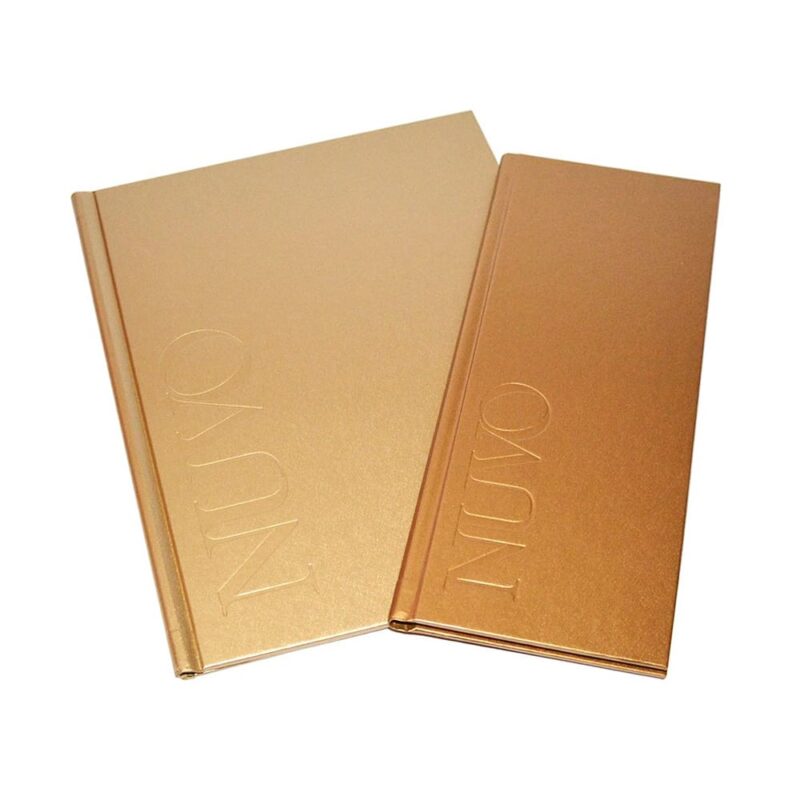
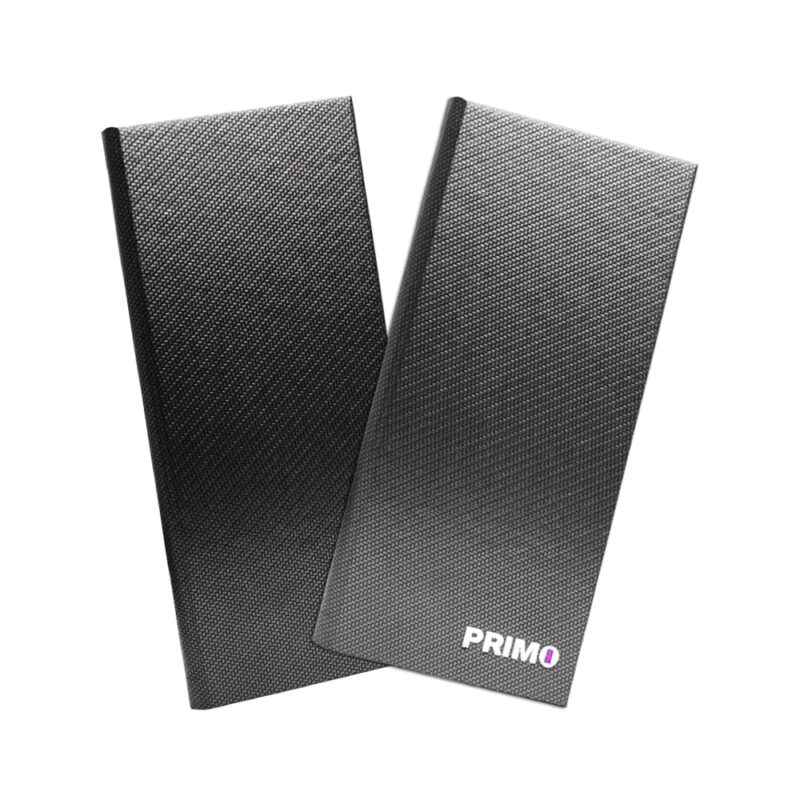
What are the five most common types of menus?
A la Carte menus list individual dishes with their prices, offering diners a wide range of choices. These are common in many eateries and are organised into categories like appetisers and mains. Prix Fixe menus provide a fixed set of courses at a price, usually including an appetiser, central, and dessert. These are popular in upscale restaurants and special occasions. Wine Lists feature a selection of wines, often categorised by type or region. Specialty Menus, like vegan or gluten-free options, cater to specific dietary needs or preferences. Seasonal Menus rotate offerings based on the availability of fresh, local ingredients, allowing chefs to be creative while offering something new to patrons.
What is the most popular menu cover size?
Cafe, Bar, and restaurant menu covers come in many sizes to fit different needs, from bar menus to full restaurant menus.
| Paper Sizes | Description | ||||||
| A4 (8.27 x 11.69 inches) | Standard size, suitable for various dining settings, and can hold extensive listings. | ||||||
| A5 (5.83 x 8.27 inches) | Half the size of A4, ideal for small menus like drink or dessert lists. | ||||||
| Two-Thirds A4 (7.87 x 11.69 inches) | Horizontal layout, functional for menus with images or side-by-side listings. | ||||||
| Half A4 (5.83 x 8.27 inches | Less width than A4 but the same height, suitable for moderately-sized menus. | ||||||
| A4 Landscape (11.69 x 8.27 inches | Horizontal layout, useful for menus with images or side-by-side listings. | ||||||
| Square (21cm x 21cm) | Unique and modern, often used in trendy or upscale places, works well with grid layouts. |
What are the different types of Menu Cover Fixing Options?
Menu cover fixings offer various options to secure and display your menus effectively. These options include:
Cord & Eyelet
- How it works: A cord is threaded through eyelets to secure menu pages.
- Advantages: Offers a classic and elegant look, easy to change pages.
- Typical uses: Suited for upscale dining establishments where aesthetics are essential.
Grip Fix
- How it works: Clamps or grips hold the menu pages in place.
- Advantages: Provides a secure hold, suitable for casual and formal dining settings.
- Typical uses: It can be used in various dining establishments, depending on the design of the grips.
Concealed Elasticated Cord
- How it works: Similar to elastic cord fixings but with the cords concealed for a cleaner look.
- Advantages: Combines the flexibility of elastic cords with a neater appearance.
- Typical uses: Can be used in various dining settings for a polished presentation.
Outer Screw Fix
- How it works: Menu pages are held in place with screws on the outer cover.
- Advantages: Offers a secure hold and presents a professional appearance.
- Typical uses: Commonly used in formal dining establishments with extensive menus.
Inner Screw Fix (Wing & Interscrew)
- How it works: Screws are used inside the menu cover to hold pages.
- Advantages: Keeps screws hidden for a clean and sleek look.
- Common Uses: Suited for formal dining settings looking for a polished appearance
Corner mounts
- How it Works: Menu pages are mounted in the corners of the cover.
- Advantages: Quick and easily secure pages, often used in casual to mid-range restaurants.
- Typical uses: Ideal for menus that change seasonally or frequently.
Additional information for Menu covers
Clear pockets additions
Clear pockets are ideal for easy menu changes, and with various sizes available, you can customise your menu to fit your needs perfectly.
Cleaning and storage
Cleaning covers is crucial to maintaining their appearance and longevity in hospitality. Regular cleaning keeps them looking fresh and helps prevent the buildup of dust, fingerprints, and spills that can accumulate over time. To clean them, start by using a soft, damp cloth. Wipe down the covers gently to remove surface dirt and smudges. For tougher stains or spills, it’s advisable to use a mild, non-abrasive cleaning solution. Ensure that the cleaning solution is suitable for the specific material of your cover, whether made of vinyl, leather, or another type. Avoid harsh chemicals or abrasive pads, as they can damage the surfaces.
After cleaning, proper drying is essential. Ensure that they’re thoroughly dried using a clean, dry cloth. This step is crucial in preventing moisture damage, which can lead to warping or deterioration over time.
Regarding storage, menu covers should be kept clean and dry. Avoid places with excessive dust or moisture, as these can negatively impact the covers’ condition. Placing a clean sheet of paper or cloth between them is a good practice if you need to stack multiple menus. This prevents scratching and sticking, which can occur when the covers are in direct contact. Also, direct exposure to sunlight or extreme temperature fluctuations should be avoided, as they can cause fading or warping of the menu.
Laws
There are no specific regulations governing menu covers, but there are requirements for menu content. By a 2022 government regulation, all menus must include calorie information. Also, menu descriptions should strive for accuracy to prevent potential advertising and consumer protection law violations.
Picking the right menu covers is integral to setting up your restaurant, cafe or pub.
Every detail matters, from the material you pick to your chosen style and colours, so take your time and try to determine the best one for you. You’ll find them in a range of prices from affordable to more expensive, excluding or including VAT. Menu covers are the first thing many customers notice, so they are a worthwhile investment to any estabalsiment. At Smart Hospitality Supplies, we offer other restaurant products like table menu holders and bill presenters to add to the experience.
We hope this guide has helped you find a suitable menu cover for your business. Our menu covers are made to order, allowing you to personalise and design them to your specifications. Discuss your ideas with an expert on 01743 465 301 or email us at [email protected].

